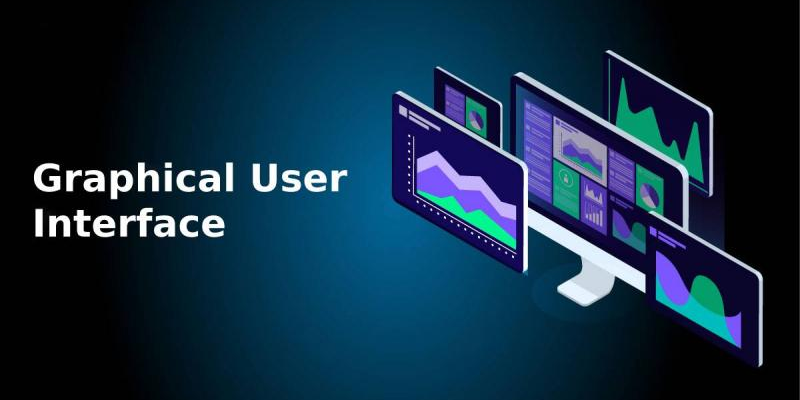
In the ever-evolving landscape of technology, interfaces play a pivotal role in shaping user interactions with software applications. Among the various interface types, the Graphical User Interface (GUI) stands out for its visual and interactive nature. In this blog post, we will delve into the fundamentals of GUI, exploring its definition, components, and its significance in enhancing user experience.
In the domain of UI/UX design, where creating seamless user experiences is a priority, courses like the UI UX Desginer Course in Coimbatore equip designers with the skills needed to craft interfaces that are not only aesthetically pleasing but also intuitive for users.
Defining Graphical User Interface (GUI)
Understanding GUI
A graphical user interface (GUI) is a kind of user interface that uses graphical components like icons to let users interact with software or electrical devices., buttons, and menus. Unlike text-based interfaces, GUIs utilize visual representations to facilitate user interactions, making them more intuitive and user-friendly.
Components of GUI
- Icons: Graphical symbols representing files, applications, or functions.
- Buttons: Interactive elements that users can click or tap to perform actions.
- Menus: Dropdown lists of options or commands for users to select.
- Windows: Containers that display content, applications, or dialog boxes.
- Text Boxes: Areas where users can input text or data.
- Cursors: Pointers that indicate the current position or selection.
Key Features of Graphical User Interface (GUI)
1. Intuitiveness
GUIs are designed to be intuitive, allowing users to perform tasks without the need for extensive training. Visual elements, such as icons and buttons, provide clear cues about their functions, making navigation straightforward for users of varying technical expertise.
2. Interactivity
Interactivity is a hallmark of GUIs. Users can interact with the interface elements by clicking, dragging, or tapping, initiating actions or navigating through the software. This dynamic interaction enhances the user experience and responsiveness of the system.
3. Multitasking
GUIs allow users to operate with numerous windows or applications at once, which makes multitasking possible. This adaptability is especially useful in situations where users must transition between jobs or consult data from several sources.
Applications of GUI in Different Domains
Graphic Design Industry
In the graphic design industry, where visual aesthetics and creativity are paramount, GUIs play a crucial role. Designers use graphic design software with intuitive interfaces to create visually appealing layouts, illustrations, and branding materials. Training programs like the Graphic Design Course in Chennai equip individuals with the skills needed to navigate and utilize these powerful tools effectively.
UI/UX Design
The field of User Interface (UI) and User Experience (UX) design revolves around creating interfaces that are not only visually appealing but also optimized for user interactions. Professionals in this field leverage GUI principles to design interfaces that enhance usability and provide a seamless user experience. Aspiring UI/UX designers can benefit from courses like the UI UX Designer Course in Coimbatore to develop expertise in creating user-centric interfaces.
Challenges and Evolutions in GUI
Adaptation to New Technologies
As technology evolves, so do the challenges in GUI design. The advent of touchscreens, virtual reality, and voice interfaces requires designers to adapt GUIs to diverse input methods. Designing interfaces that are responsive across different devices and platforms has become a crucial consideration.
Accessibility
Ensuring accessibility for users with diverse needs is an ongoing challenge in GUI design. Designers need to create interfaces that are navigable using screen readers, accommodate users with visual impairments, and provide alternative input methods.
In the field of software automation and testing, tools like Selenium have become integral. Courses such as Selenium Training in Pondicherry offer individuals the opportunity to master Selenium, a widely used tool for automating web applications. Selenium’s user-friendly GUI makes it accessible to testers and developers alike, enabling efficient test automation.
Future Trends in GUI Design
Augmented Reality (AR) and Virtual Reality (VR)
The integration of AR and VR technologies is influencing the future of GUI design. Immersive interfaces that blend the digital and physical worlds are becoming more prevalent, creating new possibilities for interactive and engaging user experiences.
Voice User Interfaces (VUI)
The rise of voice-controlled devices has led to an increased focus on Voice User Interfaces (VUI). Designing interfaces that respond to voice commands and provide a seamless conversational experience is becoming a significant area of development.
For individuals aspiring to enter the graphic design industry, courses like the Graphic Design Course in Chennai and the Graphic Design Course in Bangalore provide hands-on training in popular design software with user-friendly GUIs. These courses empower individuals to explore their creativity and translate ideas into visually compelling designs.
Conclusion
In conclusion, the Graphical User Interface (GUI) serves as a fundamental component in the field of user-technology interactions. Its intuitive and interactive nature has transformed how individuals engage with software and electronic devices. From graphic design and UI/UX design to software testing and automation, GUIs play a pivotal role in various domains, shaping the user experience and driving innovation.
The development of GUIs will probably present new possibilities and challenges as technology progresses. Designers, developers, and professionals in related fields must stay abreast of these changes to create interfaces that not only meet current expectations but also anticipate the future needs of users. In a world where user experience is a key differentiator, the role of GUIs in shaping seamless and enjoyable interactions remains paramount.
